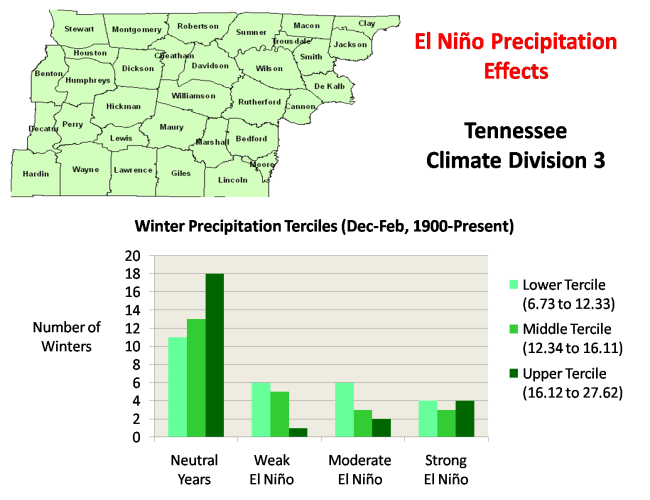|
The graph below details impacts during the winter months (December through February) associated with El Niños of the indicated intensity in Tennessee climate division 3. Winter precipitation is divided into terciles, or the driest third, the middle third, and the wettest third of all winters between 1900 and 2007. The precipitation totals associated with these groups are indicated on the graph below. For example, for all winters during the period for this climate division, the driest third had precipitation totals of 6.73 inches to 12.33 inches. Notice in the graph below that only two winters of the 11 of moderate El Niño strength since 1900 experienced precipitation totals in the wettest tercile. Of the eight remaining winters, three were in the middle tercile and six were in the driest tercile. Thus, the vast majority of past winters during moderate events have been in the middle or driest third, and a trend towards relatively dry conditions is shown.
|
 |
|
The graph below shows El Niño's effect on average winter precipitation between 1900 and 2007. Notice that average precipitation decreased fairly markedly during weak El Niño events vs. neutral conditions, and that an upward trend in precipitation is observed as El Niño conditions strengthen. Still, average winter precipitation is slightly more than three inches lower for moderate El Niño events when compared to neutral years. Also, notice that the standard deviation, or variability, of winter precipitation is relatively low during weak and moderate El Niños. In fact, precipitation during neutral winters is nearly one standard deviation above precipitation during weak and moderate El Niño winters.
|
|
|